
Dawn Merton Boothe, DVM, MS, PhD, DACVIM, DACVCP
Dr. Dawn M. Boothe is a professor of physiology and pharmacology at Auburn University College of Veterinary Medicine. She also serves as the director of the Clinical Pharmacology Laboratory, which offers therapeutic drug monitoring services to veterinary practices throughout the country and across the globe.
Articles by Dawn Merton Boothe, DVM, MS, PhD, DACVIM, DACVCP







While some in the veterinary world might be raring to throw a CBD is legal! parade, there are a few caveats keeping you from tossing confetti. Lets walk through it.

Veterinary pharmacology expert Dr. Dawn Boothe addresses the possible pitfall of generics, the finer points of fluoroquinolones and the appropriate application of amoxicillin.

Dr. Dawn Boothe helps you decide when using compounded drugs is indicated to help your patients.

Dr. Dawn Boothe helps you decide whether you should administer drugs transdermally.

Dr. Dawn Boothe discusses a good first-choice antimicrobial for empirical treatment of a urinary tract infection.

Dr. Dawn Boothe discusses whether meloxicam can be used safely in cats long-term and whether gabapentin has a role.

Dr. Dawn Boothe discusses whether you should treat patients that have chronic bacteria in their urine yet no signs of infection.

Individualized drug therapy increasingly is being recognized as an important aspect of health care for both human and veterinary medicine. Consequently, veterinarians must reach beyond FDA-approved veterinary products to provide the current standard of veterinary care to their patients.

Compounded transdermal pluronic-lethicin organo (PLO) gels have become a popular method of drug delivery widely embraced by the veterinary profession, despite the lack of scientific evidence in support of this system. The PLO gels were developed as a practical alternative to traditional drug delivery systems.
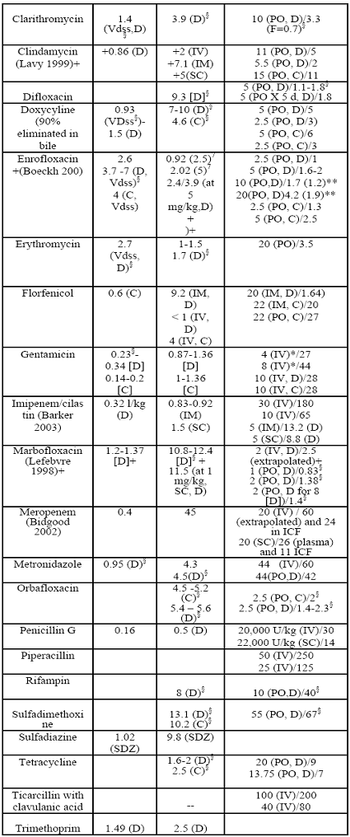
Dosing regimens for antimicrobials should be related to MIC. However, simply achieving the MIC in the patient is not likely to be sufficient for a variety of reasons.
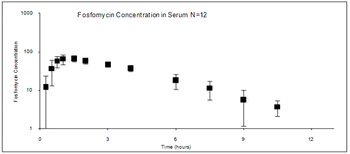
Treatment of urinary tract infections offer an example of the hazards and difficulties encountered when initial response is insufficient. Treatment of bacterial UTI offers a good example of how treatment of bacterial infections might be approaches. The goal of drug therapy has been to eliminate bactiuria, but this goal should be modified to include eradication of infection while minimizing the advent of resistance.
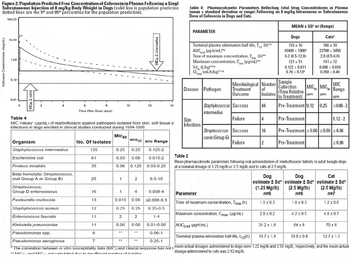
Today's drug package insert (DPI) can be a powerful ally in the selection and judicious use of a drug. The information that it provides might be categorized as either Product Description, Product Efficacy or Product Safety with some overlap among the categories. The order presented here may not be followed on the package insert. Paramount to understanding the use of a DPI is understanding what constitutes a PI.
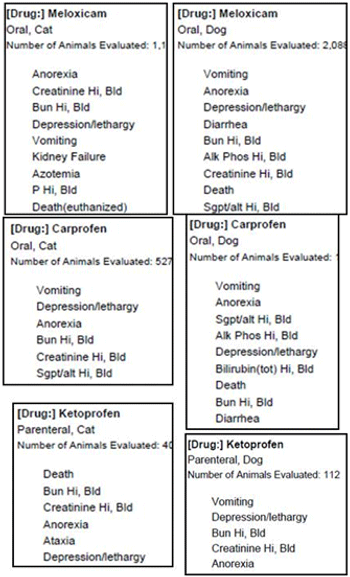
The cat as a species represents a therapeutic challenge when trying to use NSAIDs safey, including the newer drugs. Nonsteroidal anti-inflammatory drugs block the first step of prostaglandin synthesis by binding to and inhibiting cyclooxygenase This action is both dose and drug dependent.
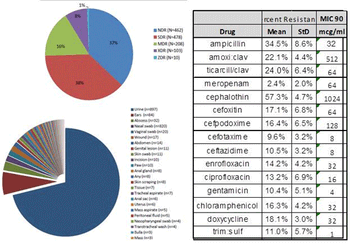
The advent of antimicrobial resistance is increasingly limiting therapeutic options in human and veterinary medicine. The ability of organisms to develop resistance to an antimicrobial varies with the species and strain.
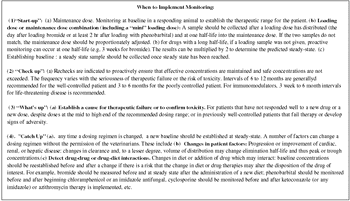
The success of any fixed dosing regimen most often is based on the patient's clinical response to the drug. Fixed dosing regimens are designed to generate plasma drug concentrations (PDC) within a therapeutic range, ie, achieve the desired effect while avoiding toxicity.

Individualized drug therapy increasingly is being recognized as an important aspect of health care for both human and veterinary medicine. Consequently, veterinarians must reach beyond FDA-approved veterinary products to provide the current standard of veterinary care to their patients.

Successful control of seizures with anticonvulsant drugs reflects a balance in achieving seizure control while minimizing undesirable drug side effects. Variability in the disposition of anticonvulsants and interactions among them and other drugs are important confounders of successful therapy.
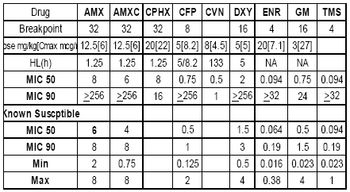
The ability of organisms to develop resistance to an antimicrobial varies with the species and strain. Many organisms remain predictably susceptible to selected drugs (eg, Brucella, Chlamydia); whereas others are becoming problematic (Pasteurella multocida).
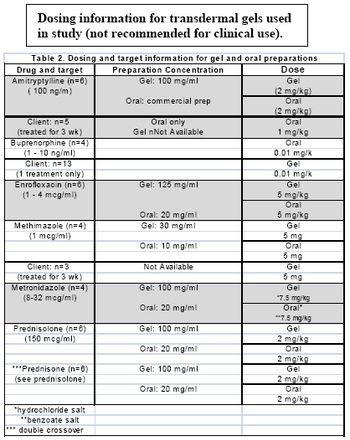
Individualized drug therapy increasingly is being recognized as an important aspect of health care for both human and veterinary medicine. However, the number of animal drugs approved by the Food and Drug Administration (FDA) is sparse in comparison to those for human patients.
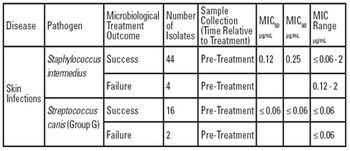
Today's drug package insert (DPI) can be a powerful ally in the selection and judicious use of a drug. The information that it provides might be categorized as either Product Description, Product Efficacy or Product Safety with some overlap among the categories.
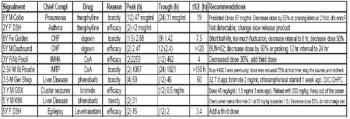
The success of any fixed dosing regimen most often is based on the patient's clinical response to the drug. Fixed dosing regimens are designed to generate plasma drug concentrations (PDC) within a therapeutic range, ie, achieve the desired effect while avoiding toxicity.
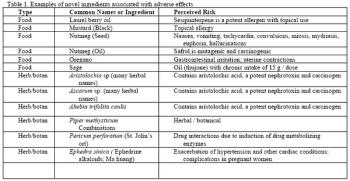
Close to 30% of pet owners have used or considered the use of novel ingredients (eg, nutraceuticals and herbs/botanicals) in their animals. In the USA, approximately 90% of veterinarians sell some type of novel ingredient and the current market of veterinary novel ingredients is between $20 and $50 million per year.
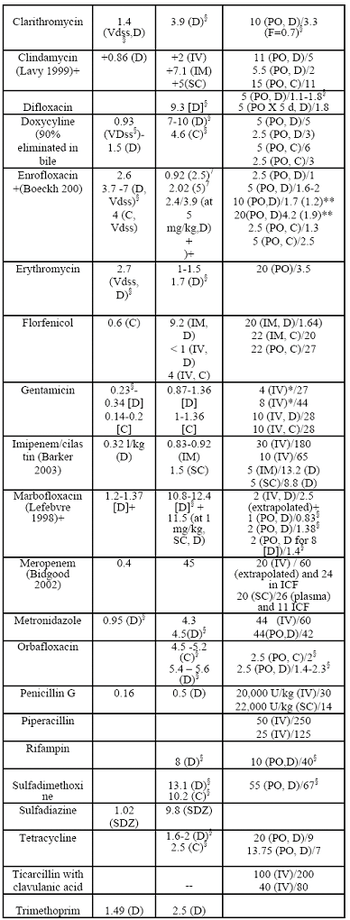
Dosing regimens for antimicrobials exemplify the integration of pharmacokinetics (what the body does to the drug) and pharmacodynamics (what the drug does to the body). For antimicrobial therapy, the "body" is the microbe.

Compounding is and always has been a critical component to the provision of individualized drug care to the small animal patient.
Latest Updated Articles
 Non-glucocorticoid immunomodulation in small animals (Proceedings)
Non-glucocorticoid immunomodulation in small animals (Proceedings)Published: April 1st 2008 | Updated:
 Video: Long-term pain control in cats
Video: Long-term pain control in catsPublished: May 21st 2012 | Updated:
 Video: Transdermal drug administration
Video: Transdermal drug administrationPublished: June 28th 2012 | Updated:
 Video: A go-to antimicrobial for UTIs
Video: A go-to antimicrobial for UTIsPublished: June 28th 2012 | Updated:
 Anticonvulsant therapy: the new and the old (Proceedings)
Anticonvulsant therapy: the new and the old (Proceedings)Published: November 1st 2010 | Updated:
 Antimicrobial resistance: are we there yet? (Proceedings)
Antimicrobial resistance: are we there yet? (Proceedings)Published: November 1st 2010 | Updated:
